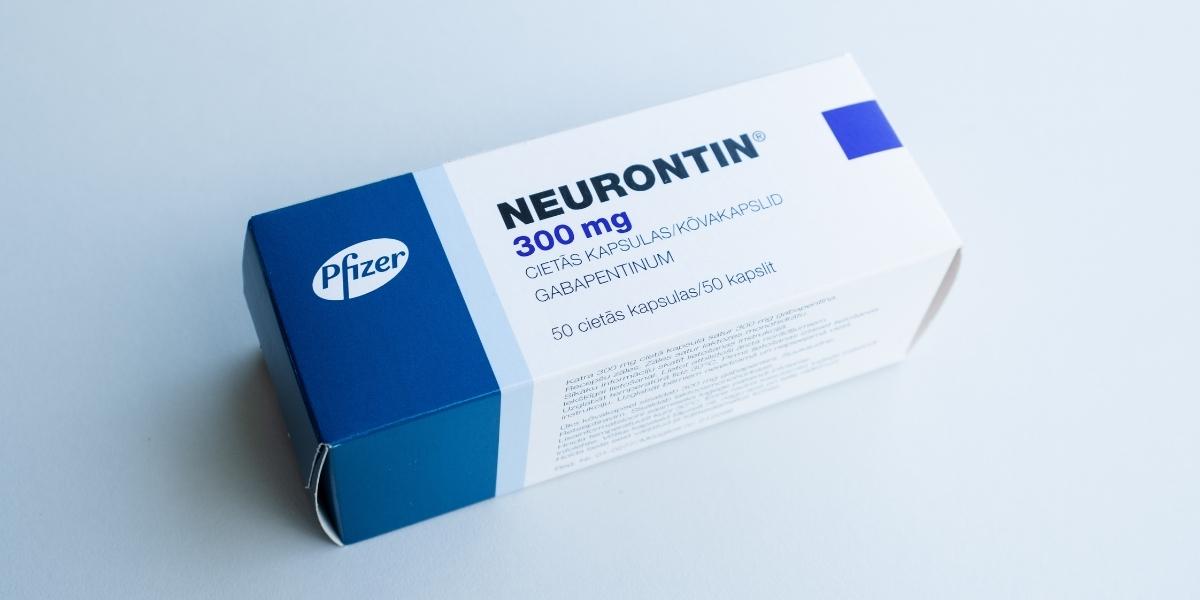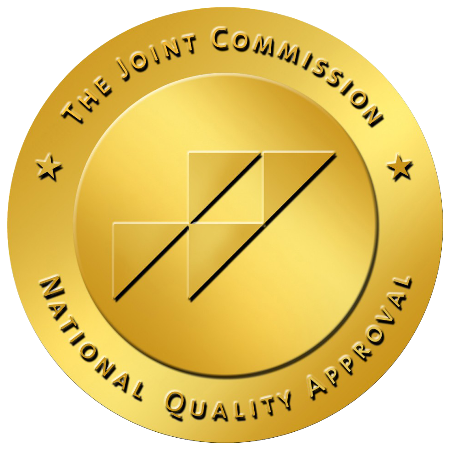Is Gabapentin Addictive?
Uses, Side Effects, and Dependency

Relatively new on the prescription drug market, gabapentin is an effective prescription medication for treating and preventing seizures and nerve pain.
Gabapentin is one of the most common medications prescribed to the general population for off-label conditions because of its sedative properties.
Originally thought to be a low-risk, non-addictive treatment option, new research reveals that gabapentin, especially when combined with alcohol and other drugs, can be addictive and cause side effects and withdrawal symptoms when misused.
What Is Gabapentin?
Gabapentin is a prescription medication initially used as an anticonvulsant also prescribed under brand names such as Neurontin, Horizant, or Gralise.
However, gabapentin has become common for various uses, including treating nerve pain, restless legs syndrome (RLS), and alcohol and drug withdrawal symptoms.
The brain produces a chemical called gamma-aminobutyric acid (GABA) that transmits nerve signals to and from the brain. Gabapentin works with GABA transmitters to reduce and regulate nerve pain and slow other reactions like seizures and twitching.
Unlike other drugs that interact with neurotransmitters, gabapentin doesn’t bind to GABA receptors or promote GABA production; it strictly influences how fast it transmits to the receptors.
It acts as a mild sedative, and some users report a euphoric high and relaxation similar to marijuana.

Uses
Gabapentin is an antiseizure medication and muscle relaxor used for epilepsy and restless legs syndrome (RLS).
Doctors commonly prescribe medicines to treat conditions outside of what the medication is intended for; this is called off-label use.
In the United States, gabapentin is one of the most commonly prescribed off-label medicines, a medication used in conditions the FDA didn’t specifically intend for the drug to treat.
Some treatment centers use it to help ease withdrawal symptoms during medical detox from other illicit drugs.
The National Institutes of Health (NIH) reports that up to 95% of gabapentin prescriptions are for off-label uses.
Some of the conditions gabapentin works to treat include:
- Chronic pain conditions
- Fibromyalgia
- Diabetic neuropathy
- Migraines
- Hot flashes in cancer patients and menopausal women
- Bipolar disorder
- Alcohol withdrawal
- Opioid withdrawal
- Post-traumatic stress disorder (PTSD)
- Insomnia
- Irritatable bowel syndrome (IBS)
Up until recently, doctors thought that it had a low abuse potential. However, in 2015 the American Journal of Psychiatry noticed an increase in misuse. Many users reported using this medication to enhance the effects of other illicit drugs.
People who abuse gabapentin have reported experiencing physical withdrawal symptoms despite not feeling psychologically addicted.
Gabapentin Dosages and Directions
There are different forms of gabapentin, including capsules, tablets, extended-release tablets, and a liquid oral solution. Doses range from 100mg to 800mg.
Gabapentin is used to treat various conditions, and each prescription will vary based on the patient and desired outcome.
Gabapentin enacarbil (Horizant) cannot be substituted for any other kind of gabapentin and should only be taken once a day with food.
Try to take every dose consistently at the same time every day, and never crush, cut, or snort the capsules or pills.
If you miss a dose close to its scheduled time, take it as soon as possible. However, if you are close to your next dose, skip the missed dose and resume your regular dosing schedule. Never double up doses.
Side Effects
Gabapentin has side effects but can also worsen the side effects of other medications if taken simultaneously.
Side effects will vary based on the dosage and the person taking it. Potential side effects of gabapentin include:
- Dizziness
- Drowsiness
- Double or blurry vision
- Unwanted eye movement
- Tremors or shaking
- Headache
- Muscle weakness
- Dry mouth
- Nausea
- Vomiting
- Constipation
- Memory problems
- Joint pain
- Ear pain
- Heartburn
- Fever
- Changes in mood or behavior
- Intrusive thoughts
- Suicidal thoughts
Most of these side effects will go away once you stop taking gabapentin.
If you feel dizzy or drowsy, find a place to sit down until the feeling passes to reduce the risk of falling and injuring yourself.
Always talk to your doctor or pharmacist about any drugs, medications, vitamins, or supplements to avoid life-threatening drug interactions.
Some side effects can become life-threatening. Stop taking gabapentin and seek medical attention if you experience any of the following:
- Rash
- Itching
- Trouble breathing or breathing problems
- Difficulty swallowing
- Swelling of the face, lips, throat, tongue, or eyes
- Hoarseness
- Seizures
- Blueish skin, lips, or fingernails
- Confusion
- Extreme sleepiness
In case of emergencies, always call 911 and tell first responders what medications you and or the person experiencing the severe side effects were taking.

Is Gabapentin a Controlled Substance?
Gabapentin is not a controlled substance on a federal level. A controlled substance is any drug that is likely to cause psychological or physical dependence and has restrictions on how it can be prescribed and refilled.
However, several states have classified gabapentin as a controlled substance in recent years, and more states have placed it in their prescription drug monitoring program (PDMP).
Gabapentin is considered a Class V drug in the following states:
- Alabama
- Kentucky
- Michigan
- North Dakota
- Tennesse
- West Virginia
Prescription monitoring programs (PDMP) help monitor medication trends and are generally a precursor to a drug becoming a controlled substance if there is an uptick in use and medical emergencies.
Gabapentin is part of PMPs in Washington D.C. and the following states, including:
- Connecticut
- Indiana
- Kansas
- Maine
- Massachusetts
- New Jersey
- Ohio
- Oregon
- Utah
- Wyoming
As this medication becomes more widely used and addiction rates increase, it will likely become a controlled substance nationwide.
The Risks
Gabapentin is the riskiest when mixed with other sedative drugs or when people intentionally take high doses to get the euphoric and sedative effects.
Any medication taken regularly, recreationally, or mixed with other drugs comes with risks, including addiction and withdrawal.
The National Institutes of Health (NIH) shows a high co-occurrence of gabapentin abuse and opioid use disorder.
Additionally, gabapentin is a common agent used to cut heroin, which means introducing more gabapentin into the system will increase your risk of overdose.
Unlike opioid overdoses, there is no antidote to gabapentin to slow or stop an overdose.
Long-Term Use
Long-term risks of gabapentin use include:
- Muscle weakness
- Miscarriage
- Fetal defects
- Visual disturbances
- Sight loss
- Loss of motor control and coordination
- Self-harm behaviors
- Suicidal ideation
Always consult your doctor or pharmacist before quitting gabapentin. You should always seek medical advice before stopping taking any prescribed medication.
Gabapentin Withdrawal
Even if you are using gabapentin precisely as prescribed for medical conditions, you can still depend on the drug physically, if not psychologically.
Because it works in the brain and body, the system quickly becomes used to it and will experience withdrawal symptoms if you stop taking gabapentin abruptly.
If you are addicted to other substances while using this medication, you will experience withdrawal symptoms that may be similar.
Symptoms of gabapentin withdrawal include:
- Nerve pain
- Joint pain
- Insomnia
- Restlessness
- Anxiety
- Sweating
- Moodswings
- Headache
- Nausea

Addiction
If you or a loved one is struggling with drug and alcohol addiction or abuse, help is available.
At Northridge Addiction Treatment Center, we are highly experienced in treating all aspects of a person’s substance abuse, including repressed trauma and the harm it causes.
Our intimate residential treatment center offers you comfort, serenity, and support while developing and flourishing through a personalized and comprehensive treatment program to ensure your success in living a healthy life free from addiction.
At NATC, we understand that many people struggling with substance abuse also battle mental health conditions that need managing. Our dual diagnosis and medication-assisted treatment programs ensure we diagnose and address both simultaneously.
Evidence-based therapies like cognitive behavioral therapy and dialectal behavioral therapy will help you develop healthy strategies and skills to move forward without giving in to harmful habits.
Reach out now to take the first steps toward your path to a lasting recovery.
Find Meaningful Recovery
Our caring and compassionate specialists are eager to help you comfortably navigate this journey to recovery. Our individualized treatment plan, programs, and therapies may be a perfect match for you or your loved one. Let us assist you in living the happy life you deserve. It starts with a phone call.



